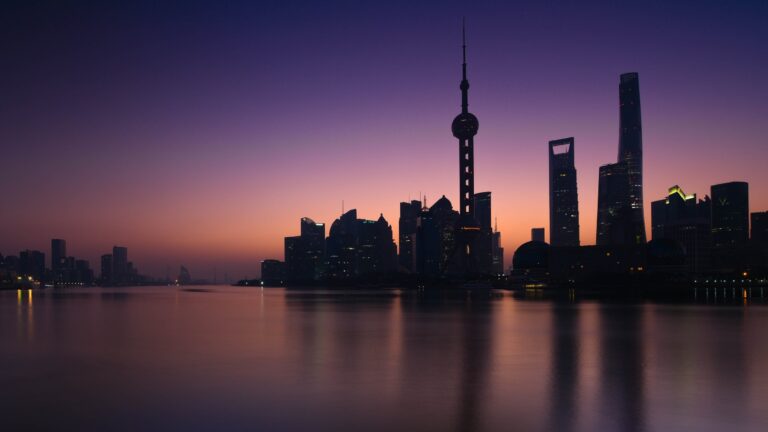
Editor’s note: This September, we will be praying for and sharing articles about leadership development in China. Today, a missionary reflects on the future of cross-cultural work and leadership development as the center of world Christianity and global missions continues to shift away from the Western church.
The political climate both at home and abroad has become increasingly critical and even hostile toward the role of missionaries in evangelism, education, and church development in the global church. Although the landscape of who does mission work has shifted a great deal over the last hundred years as the Korean church has become a major part of the missionary effort, for many, the word “missions” still conjures up images of imperialism. This pressure, from both outside and inside the church, has been intensified by the COVID-19 pandemic. The church is now being forced to answer difficult but important questions about the role of the missionary.
Despite these challenges, missionaries remain a vital part of leadership development in the global church. While their role is changing, missionaries can still provide intangible resources such as experience, an outside perspective, and a connection with the global church community. Although the intangible resources these missionaries provide can sometimes create unhealthy dependence, partnership with global missionaries can bless the fabric of local church life.
>
”“The church is now being forced to answer difficult but important questions about the role of the missionary.”
The burning question becomes: how can we re-structure the missionary’s role to fit the modern era? Much practice has changed over the last century, and we have learned valuable lessons about wise missiology, as well as how to avoid past mistakes. The Western church is no longer the sole source of missionary resources. Emerging churches—including the house church movement in China—are now sending missionaries abroad. As these churches enter the missionary force, they will need to wrestle with the same issues faced by those who went before them, and learn from the mistakes made by the Western missionary movement.
What is the role of the missionary in global church leadership development? Three things surface as we consider this question: contextualization, partnership, and sustainability. Any missionary that has wrestled with the penetrating questions of missionary work and takes the long-term effects of this pandemic seriously must consider these factors. Most of my experience is in China, but these concepts apply to most, if not all, contexts.
CONTEXTUALIZATION
Contextualization was developed in the ecumenical church setting of the World Council of Churches. Taiwanese theologian Shoki Coe coined the expression in 1972 to describe something that goes beyond the nineteenth-century three-self model of Henry Venn and Rufus Anderson, which argued for “self-governing, self-propagating and self-supporting” churches and was designed to give local churches more agency. Given the term’s liberal roots in the ecumenical setting, evangelicals looked on “contextualization” with suspicion for the better part of two decades. Contextualization in leadership development means teaching local leaders to self-theologize, while concurrently addressing contextual factors and holding to the authority of scripture and what it teaches us about humanity, culture, and God.
Missiologist Paul Hiebert calls for a new approach to missions that recognizes the subjective nature of how we process reality in our contexts, while holding fast to the objective truths of Scripture. This allows the gospel to remain tethered to the normative authority of scripture, while allowing for local expressions of that truth.
SUSTAINABILITY
The second factor is sustainability. Sustainability looks at building ministry infrastructure that allows the leader to continue their work without being overly-dependent on outside sources. In the original three-self model, this aligns closely with the idea of being self-supporting. How can missionaries help train leaders, while also helping to build the infrastructure needed to sustain those leaders?
This covers a wide range of factors. To name just a few: financial resources, property, office equipment, technology, ongoing education, and training. Establishing institutions, such as bible schools and seminaries, can sometimes be helpful in this effort, provided there is sufficient local support. Otherwise, the institution itself can become an unsustainable ministry and a long-term burden that does not contribute to the building of ministry infrastructure.
PARTNERSHIP AND BEYOND
Finally, the concept of partnership is critical in leadership development. In reality, all three of factors bleed into and connect with one another in different ways. For example, partnership also connects to sustainability in the way it prioritizes the local church’s agency and the role they play in carrying on the ministry beyond missionary contributions.
>
”“One has to seriously reflect on what the Lord is teaching his church about developing local leaders through the conditions of the pandemic…wise agencies ought to begin to wrestle with the implications of the growing number of Christians in the global South and East.”
In a provocative journal article called Covid-19, Trends in Global Mission, and Participation in Faithful Witness, Paul Bendor-Samuel calls for “indigenous witness” and a thorough re-thinking of how we do missions given the global challenges facing the church. It is not necessary to agree with all of Bendor-Samuel’s conclusions to affirm the issue he is addressing. “Covid-19, far from being a frustration to the mission of God, could be just the restraint to the global mission industry we need if we are to reimagine how different parts of the Body of Christ act together to support faithful, holistic, local witness,” Bendor-Samuel writes.
These sound like mutinous thoughts to those of us who work in large, Western-based missions agencies, but one has to seriously reflect on what the Lord is teaching his church about developing local leaders through the conditions of the pandemic.
The task of global outreach no longer falls on the shoulders of missionaries from traditional sending nations in the West, nor does it fall on the shoulders of the “younger churches” of nations like South Korea. As the global community of churches envisions the future of missions and missionaries, wise agencies ought to begin to wrestle with the implications of the growing number of Christians in the global South and East. These changes should be reflected in policies and strategies within mission agencies. For some, who have already begun, this discussion this is a hearty confirmation; while for others, this may feel like a call to a mammoth undertaking.
Urban Farmer is a pseudonym used by an American who works to support and strengthen the Chinese house church.
FOR PRAYER AND REFLECTION
Pray for the Chinese and other emerging churches to have wisdom and discretion as they become leaders in global missions.


































